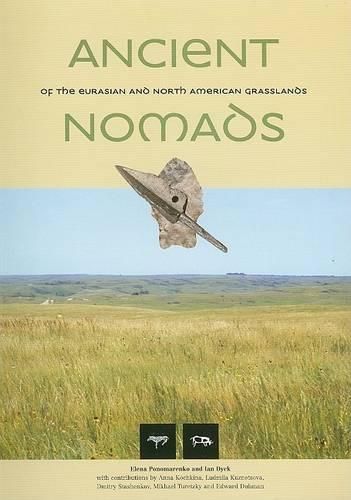Readings Newsletter
Become a Readings Member to make your shopping experience even easier.
Sign in or sign up for free!
You’re not far away from qualifying for FREE standard shipping within Australia
You’ve qualified for FREE standard shipping within Australia
The cart is loading…






Nomadic lifestyles dependent on herd animals developed independently on the grasslands of Eurasia and North America about 5,000 years ago. The landscapes that these peoples occupied were generally similar, but the basis of their nomadism was quite different. Eurasian steppe nomads relied on domestic sheep, goats, cattle and horses for their subsistence and on horses, cattle and, to a limited extent, camels for their travel; North American prairie nomads relied on wild bison for subsistence and on themselves and dogs for travel.
In comparing the two lifestyles, this study shows that certain features, such as the use of circular portable dwellings, seasonal rhythms of movement, and minimalist material cultures, were quite similar; but other features, such as the use of metals, access to urban civilizations, the nature and scale of warfare, and overall population sizes, were very different. Yet, both kinds of nomadism dominated their respective landscapes until being supplanted by European or EuroAmerican expansionism between about 300 to 150 years ago.
$9.00 standard shipping within Australia
FREE standard shipping within Australia for orders over $100.00
Express & International shipping calculated at checkout
Stock availability can be subject to change without notice. We recommend calling the shop or contacting our online team to check availability of low stock items. Please see our Shopping Online page for more details.
Nomadic lifestyles dependent on herd animals developed independently on the grasslands of Eurasia and North America about 5,000 years ago. The landscapes that these peoples occupied were generally similar, but the basis of their nomadism was quite different. Eurasian steppe nomads relied on domestic sheep, goats, cattle and horses for their subsistence and on horses, cattle and, to a limited extent, camels for their travel; North American prairie nomads relied on wild bison for subsistence and on themselves and dogs for travel.
In comparing the two lifestyles, this study shows that certain features, such as the use of circular portable dwellings, seasonal rhythms of movement, and minimalist material cultures, were quite similar; but other features, such as the use of metals, access to urban civilizations, the nature and scale of warfare, and overall population sizes, were very different. Yet, both kinds of nomadism dominated their respective landscapes until being supplanted by European or EuroAmerican expansionism between about 300 to 150 years ago.